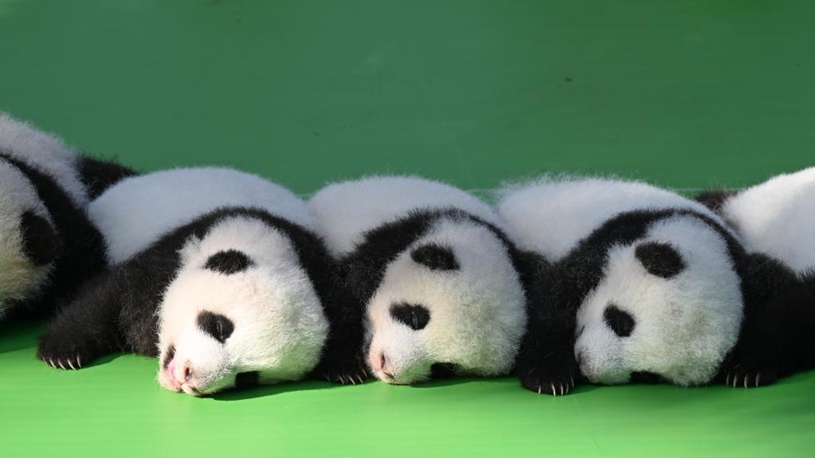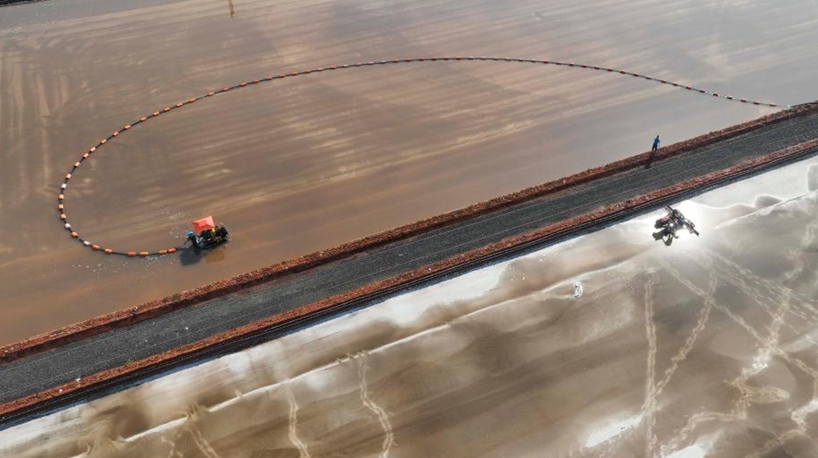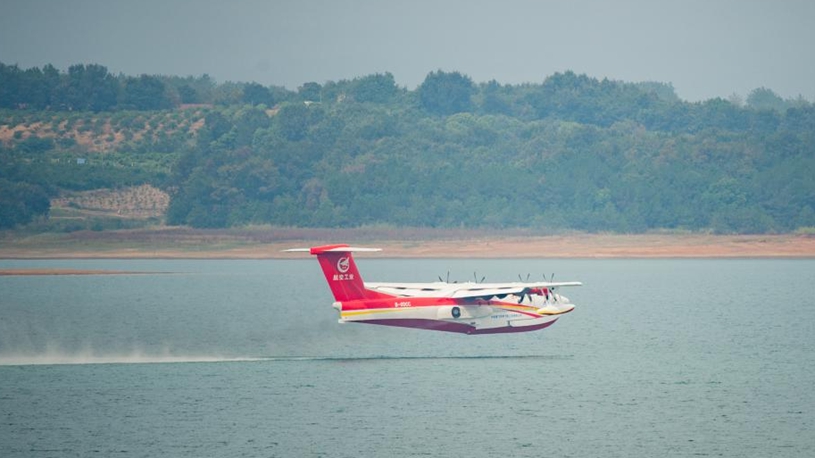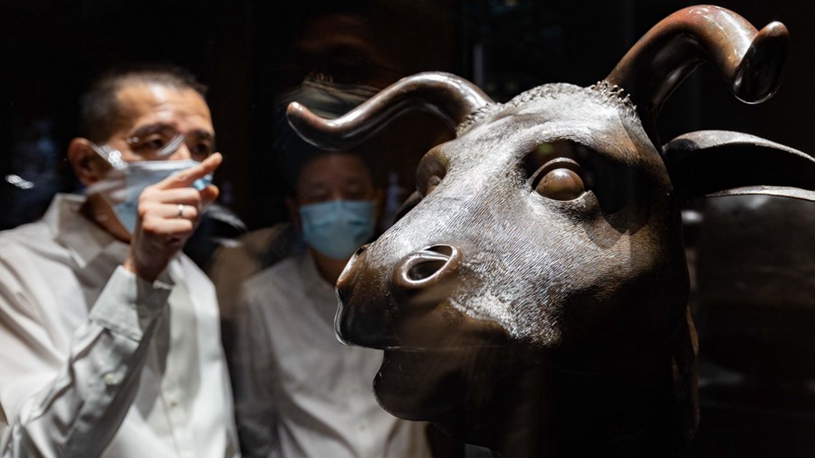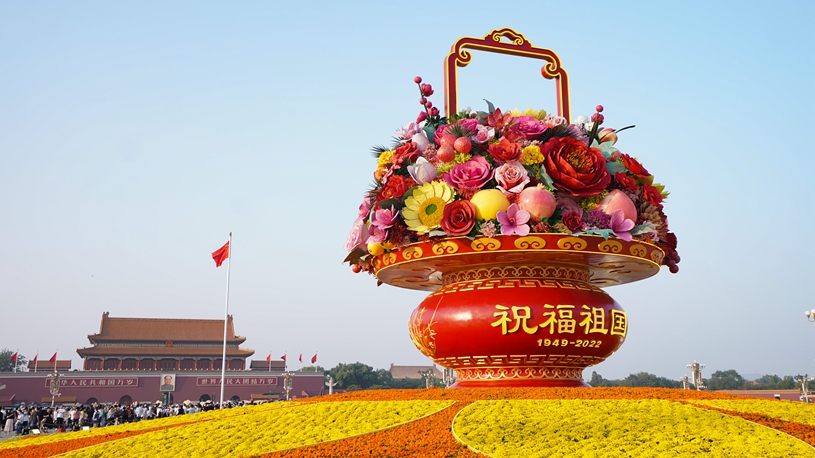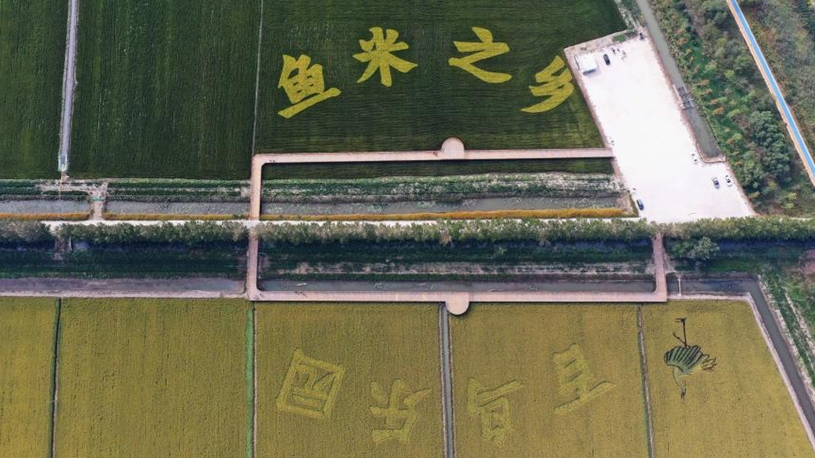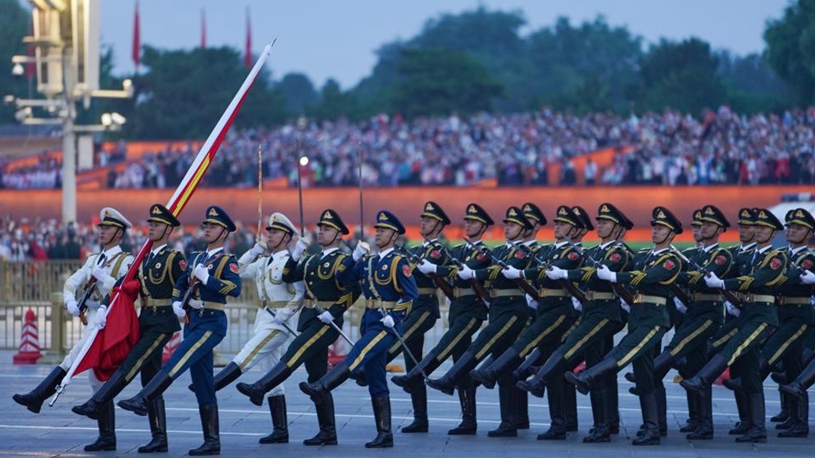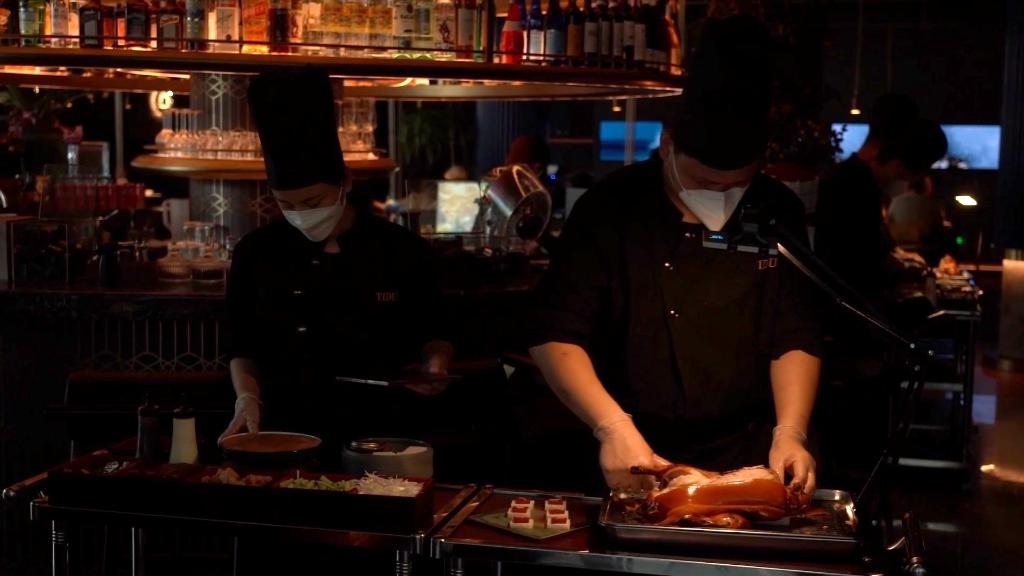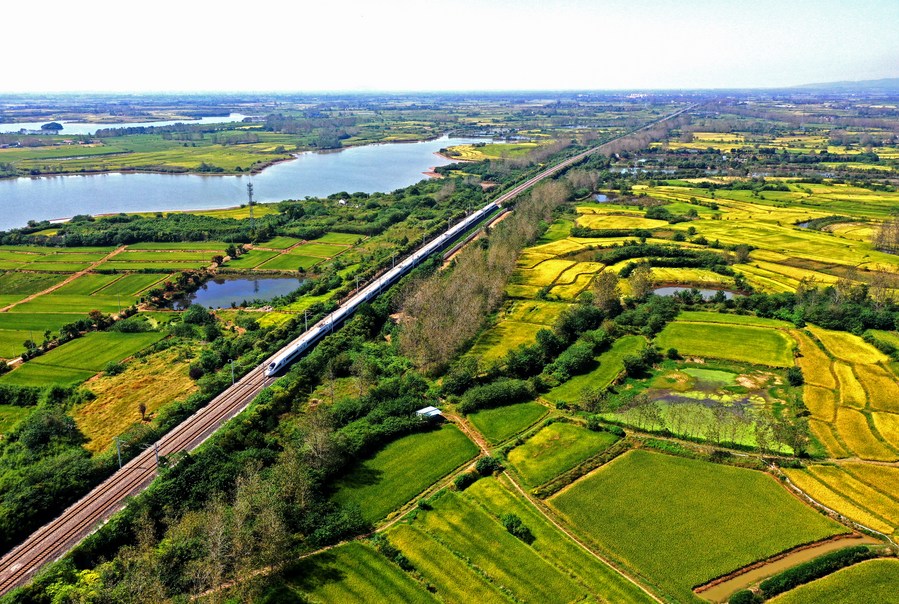
Aerial photo taken on Sept. 22, 2021 shows a high-speed train running by rice fields in Baijiu Village of Quanjiao County, east China's Anhui Province. (Photo by Shen Guo/Xinhua)
HEFEI, Oct. 2 (Xinhua) -- Though having been undergoing prolonged heat and drought since this summer, Chen Lei's rice field in Changfeng County, east China's Anhui Province, is still expected to reap a bumper harvest at the end of October.
Unlike common rice grown in paddy fields, the water-saving and drought-resistant rice varieties grown by Chen were sowed on dry land, while their output is about the same as common rice.
Around 20 km away in Hefei City, capital of Anhui, a seminar held in late September gathered experts countrywide to discuss these new rice varieties.
"Agricultural water consumption accounts for over 70 percent of the total water consumption in China, and rice irrigation accounts for over 70 percent of the agricultural water consumption," said Luo Lijun, chief scientist of the Shanghai Agrobiological Gene Center.
After years of research, Luo and his team combined the good qualities of traditional rice with the drought resistance of upland rice to cultivate the new varieties, which can save about 50 percent of water and 30 percent of fertilizer usage.
As heat and drought swept many regions of China this year, the new rice varieties have helped many farmers secure production.
According to Luo, over 3 million mu (200,000 hectares) of these varieties have been grown in China as of now, including around half of them in Anhui.
"Despite persistent heat, I only watered the field twice this year, and the rice still grows well," said Chen, who expanded his rice field from 300 mu last year to 1,000 mu.
He also spent less on electricity for irrigation, as well as pesticide and herbicide thanks to the new varieties.
Meanwhile, the water-saving and drought-resistant rice can reduce about 90 percent of the emission of methane, a greenhouse gas, compared with common varieties, said Zhou Sheng, deputy director of the Shanghai Engineering Research Center of Low-carbon Agriculture, at the seminar.
Luo's team is striving to achieve an annual planting area of 10 million mu of the new varieties during the 2021-2025 period, which will reduce 156,000 tonnes of methane emissions from rice fields annually, equivalent to about 4.4 million tonnes of carbon dioxide.
The special varieties have also been introduced to nearly 20 countries overseas, including 11 African countries, according to Liu Zaochang, a researcher with the Shanghai Agrobiological Gene Center.
"We have been developing new varieties based on the local weather and climate of foreign countries, wishing to contribute our part to global food security," said Liu. ■

